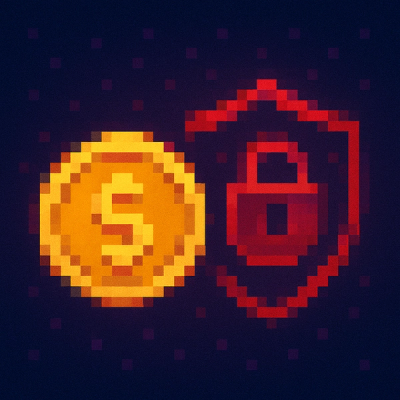
Security News
Security Community Slams MIT-linked Report Claiming AI Powers 80% of Ransomware
Experts push back on new claims about AI-driven ransomware, warning that hype and sponsored research are distorting how the threat is understood.
ember-notification-hub
Advanced tools
A small, flat design notifciation hub for your Ember app. Stick it to the top or bottom of your page. Show your users what asynchronous actions are pending, failed or completed.
Why? Most notification add-ons for ember do not take a promise interface, have a compact way to show many asychronous task results or persist them across sessions.
ember install ember-notification-hub
Ember notification hub can either be mounted to the top or the bottom of your application. For the bottom of your app do:
{{ember-notification-center bottom="-25px" openBottom="0px" left="20%" width="60%" pullDown=false}}
Where bottom is the CSS bottom position of the notification bar when it is collapsed, openBottom is the CSS bottom opsition when the hub is opened and pullDown indicates the orientation of the notificatio hub. The variable left and width sets their respective CSS properties for horizontal placement and width.
For mounting the hub to the top of your application use the top and openTop variables with pullDown=true do:
{{ember-notification-center top="-25px" openTop="0px" left="20%" width="60%" pullDown=true}}
To send a notification to the hub, the add-on installs the emberNotificationCenter service. Inject this to any Ember object you want to send the notificaiton from:
Using the promise-based pushNotification API you can give immediate feedback to users by giving a short description of the asynchronous task and a promise that resolves when the task is complete:
The add-on expects that if your async notification fails to reject the promise with an array of error objects. An error object contains a code and title field as show in testFail.
export default Ember.Controller.extend({
emberNotificationCenter: Ember.inject.service(),
actions: {
testFail: function () {
this.get('emberNotificationCenter').pushNotification({
title: 'Test Async Action 1',
description: 'This shows an asynchronous notification with a promise'
}, new Ember.RSVP.Promise((resolve, reject) => {
setTimeout(() => {
reject([{
code: '404 Bad Request',
title: 'You must boogy before riding'
},
{
code: '403 Not Authorized',
title: 'Who do you think you are?'
}]);
}, 3000);
}));
},
testPass: function () {
this.get('emberNotificationCenter').pushNotification({
title: 'Test Async Action 1',
description: 'This shows successful asynchronous notification with a promise'
}, new Ember.RSVP.Promise((resolve, reject) => {
setTimeout(() => {
resolve();
}, 3000);
}));
}
}
});
Because the add-on is designed to handle Ember JSON API adapter errors, querying your backend through Ember Data Store will automatically render errors that occur from your server, without doing any extra work:
this.get('emberNotificationCenter').pushNotification({
title: 'Committing Model',
description: 'Your model will be updated with the lastest info!'
}, myModel.save());
These are notifications that do not render status of a notification based on a promise. The add-on assumes whatever action already successfully completed. You use the same pushNotification interface, but just omit the promise like so:
this.get('emberNotificationCenter').pushNotification({
title: 'You did it!',
description: 'This thing that required no time was completed successfully.'
});
This addon uses ember-localstorage-adapter to save notification results between application lifecycles. When a notificatin is still Pending it will not be saved. We assume that you will prevent users from leaving your application until a Pending notification is complete.
The following Ember components are added to your application after install:
emberNotificationCenter - Used to push notifications from anywhere in your appemberNotificationCenter - The notification hubemberNotificationPullOut - Internally used by the notification hub to show individual notificationsemberNotificationLocalNotification - Used to store notificationsemberNotificationLocalError - Used to store notification failure reasonsgit clone https://github.com/vmpowerio/ember-notification-hub
cd ember-notification-hub
ember server
Visit your app at http://localhost:4200.
npm test (Runs ember try:testall to test your addon against multiple Ember versions)ember testember test --serverember buildFor more information on using ember-cli, visit http://ember-cli.com/.
MIT
FAQs
A persistent notification center for your ember apps.
We found that ember-notification-hub demonstrated a not healthy version release cadence and project activity because the last version was released a year ago. It has 1 open source maintainer collaborating on the project.
Did you know?

Socket for GitHub automatically highlights issues in each pull request and monitors the health of all your open source dependencies. Discover the contents of your packages and block harmful activity before you install or update your dependencies.

Security News
Experts push back on new claims about AI-driven ransomware, warning that hype and sponsored research are distorting how the threat is understood.

Security News
Ruby's creator Matz assumes control of RubyGems and Bundler repositories while former maintainers agree to step back and transfer all rights to end the dispute.

Research
/Security News
Socket researchers found 10 typosquatted npm packages that auto-run on install, show fake CAPTCHAs, fingerprint by IP, and deploy a credential stealer.